Below you will find a guide for Istanbul, structured on a day by day basis
It is not in an order of priority but thought more considering which neighborhood is best to enjoy on which day of the week, the historic peninsula starting on Monday
Most photos are clickable with a link to Google Maps location
If you want to arrange a tour, here is a recommended contact: She Tours
Don’t wait until last minute if you want to book a tour!
Scroll all the way down to view destination suggestions in Turkey
Day 1 - Monday
The Imperial City
Istanbul was an imperial city for almost 1600 years. Grand empires - the Byzantine (the Eastern Roman), Latin Kingdom of Constantinople, and the Ottoman - chose this city as the center of their rule that expanded over continents
Visit

Hagia Sophia Grand Mosque: Once a church, later a mosque, then a museum—and now a mosque again—this breathtaking landmark was originally built in 537. Photo by Ümit Hamidi

Hagia Sophia's domes and minarets were added in the 15th and 16th centuries

Topkapı Palace was the main residence and administrative headquarters of the Ottoman sultans between the 15th and 19th centuries - Harem pictured in the photo

The Blue Mosque, built in the early 17th century, is famed for its six minarets—a striking number, as most mosques have only one, two, or four

Its interior is equally breathtaking, lined with over 20,000 hand-painted blue İznik tiles

The Basilica Cistern was the major water reservoir of Constantinople. It is the largest and most famous of the estimated 200+ underground cisterns in Istanbul.
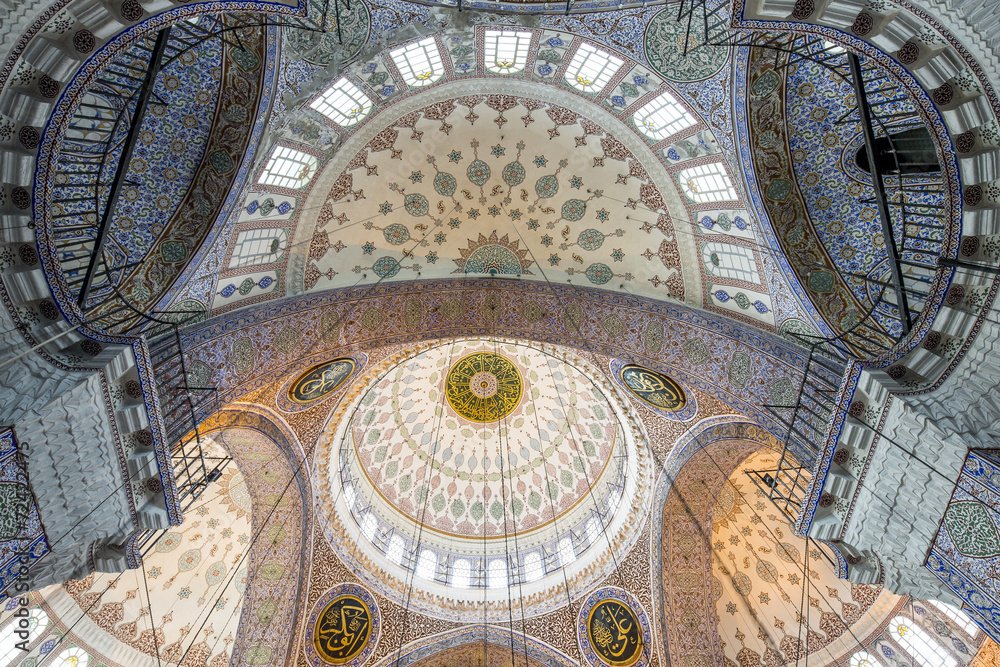
Süleymaniye Mosque -- designed by the Ottoman master Architect Sinan, is one of his most adored and monumental works
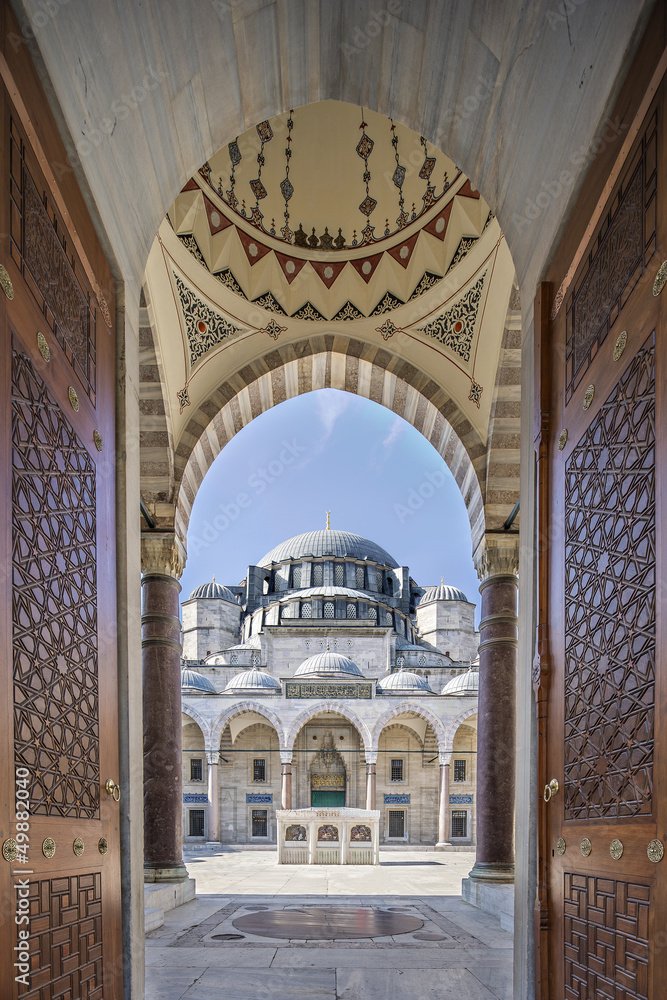
It was built as a tribute to Sultan Suleiman the Magnificent

Phanar Greek Orthodox College is a striking red-brick structure that towers over the historic neighborhood of Balat. Built in 1881, it remains one of the oldest and most prestigious Greek Orthodox schools in Istanbul

As you wander the streets of Balat, you'll find vibrant houses painted in pink, blue, and yellow, alongside traces of Jewish, Armenian, and Orthodox heritage woven into the fabric of daily life
Eat

Ali Muhiddin Hacı Bekir has been around since 1777, and this historic shop—its original location—is considered the birthplace of Turkish delight

Pandeli is a historic gem in the Spice Bazaar, named for its founder—a Greek street vendor who started his business over a century ago

It has welcomed notable guests, from founding father Atatürk to global icons like Queen Elizabeth II, Audrey Hepburn, Sean Connery, and many more..

Standout dishes include kağıtta levrek (baked sea bass), patlıcanlı börek (flaky pastry with eggplant), and vişneli tirit—a sour cherry–soaked bread pudding served with rich kaymak for dessert

Dönerci Şahin Usta in Grand Bazaar serves delicious döner wrapped in pita bread

Hamdi Restaurant is a beloved Istanbul classic known for its rich kebab selection. Enjoy a pistachio kebab with views of the Golden Horn and the Bosphorus Strait

End your meal at Hamdi with traditional Turkish desserts like baklava or künefe

Tahmis Street, named after coffee roasting, is one of the liveliest streets in Istanbul—linking the Spice Bazaar to a cluster of historic coffee and spice shops. The air is rich with the scent of freshly ground beans, led by the original shop of Kurukahveci Mehmet Efendi, roasting Turkish coffee here since 1871

Lokanta 1741, set within the historic Cağaloğlu Hamamı, offers refined meze dining in an elegant setting. Its menu brings a modern twist to classic Turkish flavors

Tarihi Sultanahmet Köftecisi Selim Usta is a busy canteen, founded in 1920, serving just the essentials: köfte (meatballs), piyaz (white bean salad), and irmik helvası (wheat semolina dessert)—no menu needed
Shop at Bazaars

Grand Bazaar has more than 4000 stores to discover but here are a few...

Punto Carpet, outside of Nuruosmaniye Gate

A modern take on Anatolian carpets, Dhoku blends old-world weaving with sleek, contemporary design—crafted in Istanbul’s Grand Bazaar with global flair. Recep Karaduman and Şişko Osman are other famous carpet stores in the bazaar

Iznik works for beautiful ceramic objects in the iznik hand-painted style

Sivaslı Istanbul Yazmacısı is a hidden gem in the Grand Bazaar, this unmarked shop is a treasure trove of antique Ottoman textiles. Fashion legends like Armani and Galliano have marveled at its embroidered silks and handwoven wonders—pure connoisseur magic

Yazzma for traditional home textiles. Ikat patterns on pillows are really popular
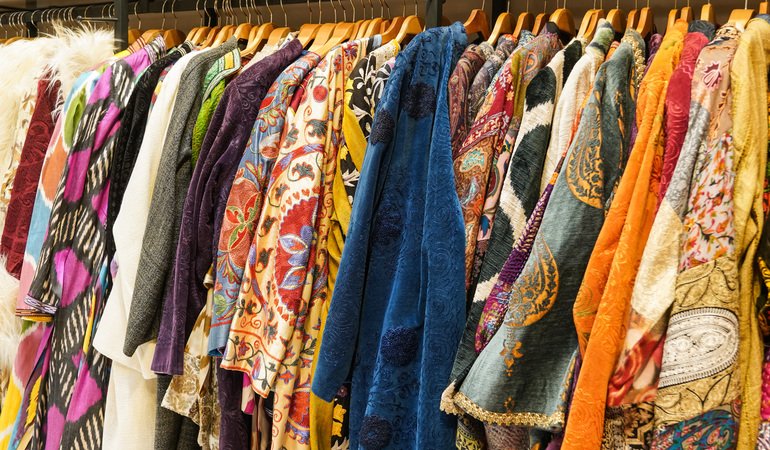
Ottoamano (visited by celebrities like Grace Kelly, Martha Stewart), Kaftan House and Cashmere House are great stores for women's attire, kaftans and pashmina

Zincirli Han is one of the finest surviving caravanserais, with shops on the ground floor and workshops above—dating back to when the Grand Bazaar was organized into sections, each specializing in a particular craft

Egyptian (Spice) Bazaar

Some noteworthy vendors include Malatya Pazarı and Ucuzcular
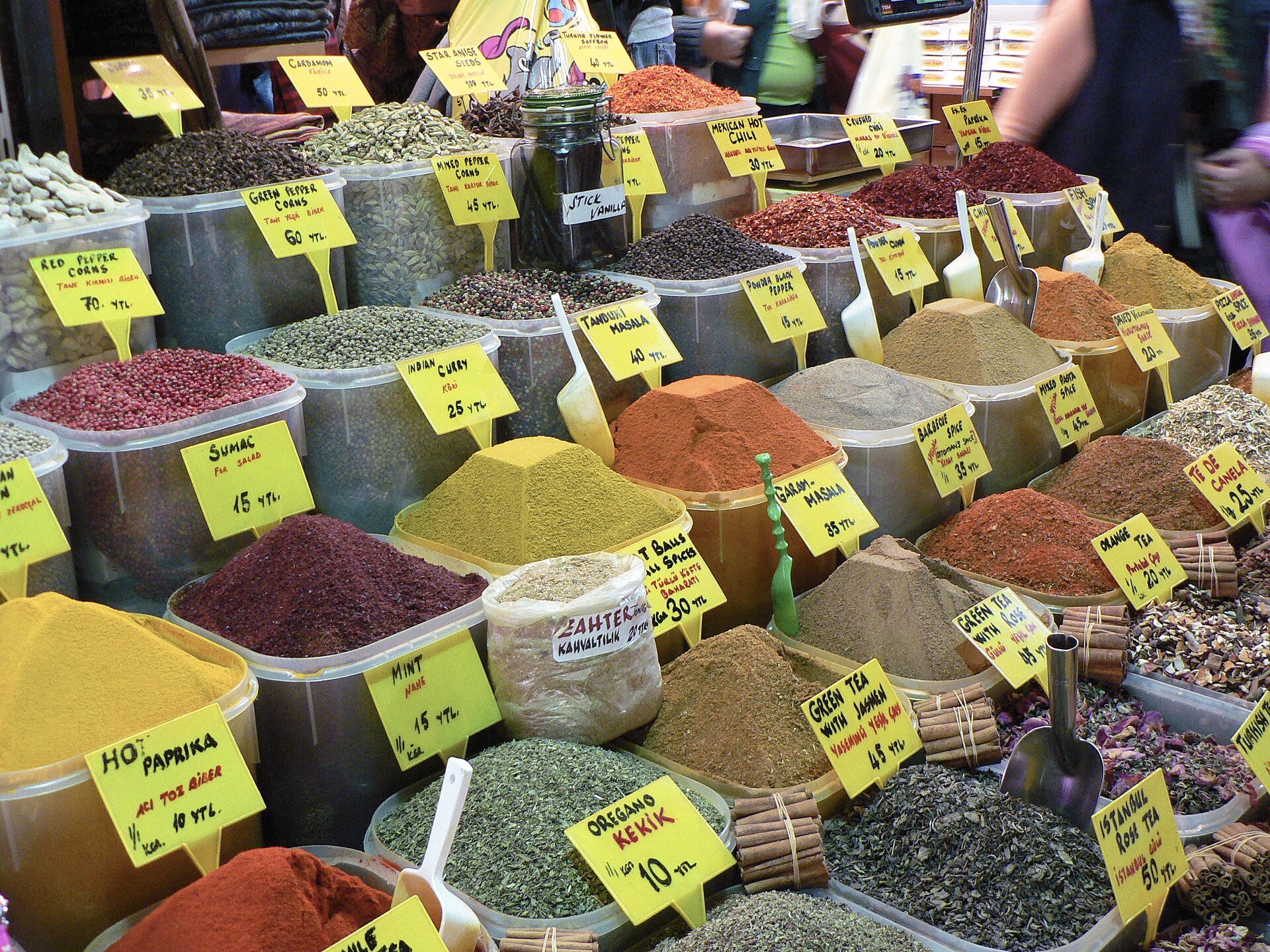
For the spices, you should look out for sumac, a maroon-burgundy colored spice made from berries of a wild bush, dried red pepper flakes, çörek otu (Nigella seeds) and Iranian saffron

Cankurtaran Gıda for local charcuterie like sucuk, pastırma and veal tongue

and honey and cheese
Day 2 - Tuesday
Glamorous Bosphorus
The Bosphorus strait bisects Istanbul right in the middle: to the west of it lies Europe, and to its east is Asia
Bebek is one of the most beautiful neighborhoods in Istanbul. Once a humble fishing village, it’s now one of the city’s chicest and most elegant areas.
Arnavutköy is famed for its seafood and fish restaurants, where rakı is paired with meze, while both Arnavutköy and Bebek are dotted with lively bars perfect for a drink by the water.
You can enjoy a scenic walk from Arnavutköy to Bebek, then continue on to Rumeli Hisarı and Emirgan along the Bosphorus. Don’t miss the remnants of the old city walls when you reach Rumeli Hisarı
Bebek

Mangerie Turkish breakfast spread, includes all of the wonderful usual suspects: fresh tomatoes and cucumbers, a mixed olive plate, more than several cheese plates, butter, clotted cream and honey, many jams, and more

You’ll also be able to find Anatolian-style egg dishes at Mangerie, such as menemen (eggs, tomatoes, and peppers tossed together in a copper pan)

Bebek kahve -- start the morning with çay and simit (tea and sesame pastry/Turkish bagel) at this old-school kahvehane

Try some Turkish white cheese - keep in mind that this place only accepts cash. A full Turkish style breakfast spread is available here also

Lucca is a Bebek hotspot known for its lively nights and standout kitchen. Grab a duck pappardelle or sushi, sit outside, and enjoy prime people-watching by the park

Meşhur Bebek Badem Ezmesi, has sold the city's most famous marzipan since 1904. Sourcing oil-rich almonds from the eastern Turkish cities of Diyarbakır, Mardin, Midyat and Elazığ

Photo from the current store's opening in 1976

Egyptian Consulate - photo by Ümit Hamidi

Egyptian Consulate, built in 1902 by the Italian architect Raimondo D'Aronco, is one of the most important examples of Art Noveau in Istanbul. Its best viewed from the sea, and closed to visitors except on official business

Baylan is a legendary patisserie that’s been serving Istanbul since 1923. From its Bebek location, you can spot the Egyptian Consulate just across the water

Kup Griye—Baylan's signature dessert— is a decadent mix of caramel ice cream, whipped cream, and candied almonds. It is a nostalgic favorite that has stood the test of time

The rooftop bar at Bebek Hotel draws a chic crowd with panoramic Bosphorus views and expertly crafted cocktails—just below, on the third floor, is Sankai by Nagaya, the hotel’s Michelin-starred Japanese restaurant
Arnavutköy

Sur Balık in Arnavutköy is a top spot for Rakı, fresh fish, and mezzes—all paired with stunning Bosphorus views. Cale and Neşe had their first date here

Arnavutköy Balıkçısı is a local favorite for seafood. Its newer, more spacious branch in Yeniköy offers the same quality further down the strait. Don’t miss the tomato-onion and corn salads

You'll see the iconic colorful waterfront mansions in Arnavutköy right after you pass Arnavutköy Balıkçısı and before you get to the pier. Photo by Ümit Hamidi

Adem Baba is a fresh fish option for lunch. Keep in mind that they don't serve alcohol

Ümit Hamidi

Alexandra Cocktail Bar sits just across from Arnavutköy’s fish restaurants and is run by award-winning mixologist Osman Baycan. The signature Pasiflora—gin, lemongrass, cucumber, and citrus—is a must-try

Alexandra has two distinct spaces: a lively DJ-powered dance floor downstairs, and an upstairs lounge with sweeping Bosphorus views—perfect for sunset cocktails

Dante Brasserie is a stylish cocktail bar tucked beside Arnavutköy’s historic Greek Orthodox Church
Rumeli Hisarı, Emirgan & further…

Rumeli Castle (Rumeli Hisarı) is an Ottoman fortress dating to 1452. It was built by Ottoman sultan Mehmed II (Mehmed the Conqueror) in preparation for the conquest of Constantinople

Perili Köşk (haunted house) got the nickname due to the construction time. The construction of the building started in the early 1910s but stopped when the Ottoman Empire entered the First World War as craftsmen joined the armed forces

Today, Perili Köşk houses Borusan Contemporary, an art museum, and serves as the headquarters for Borusan Holding

Equestrian Mansion (Atlı köşk), former residence of the businessman Sakıp Sabancı and now home to the museum that bears his name
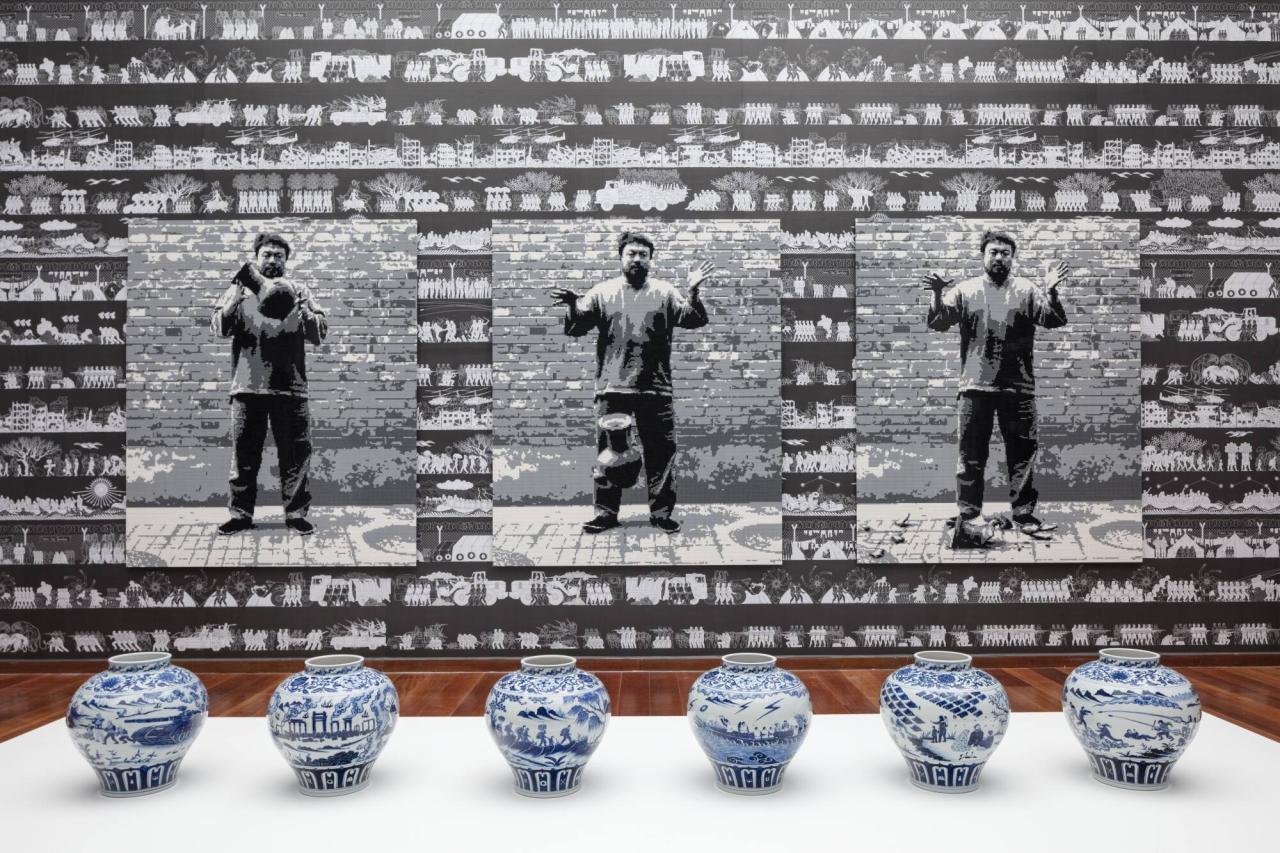
Sakıp Sabancı Museum (SSM) is one of Istanbul’s leading institutions, home to a permanent collection of Ottoman calligraphy and major temporary exhibitions—from Marina Abramović to David Hockney and Ai Weiwei

The Sabancı Museum has also been home to a restaurant run by the MSA: The Culinary Arts Academy of Istanbul, which boasts gorgeous view of the Bosphorus

Ümit Hamidi - Emirgan

Kıyı Balık is in Tarabya, further down the Bosphorus coastline. It's one of city's best fish restaurants and have been around since 1964
Day 3 - Wednesday
The “Other” Side
Moda - Kadıköy - Suadiye
If the Sultanahmet area refers to Istanbul’s glorious past, the neighborhoods of Kadıköy point to its progressive future. It has a lively street culture and nightlife
Ride the ferry from Europe to Asia
Kadıköy

Maiden’s Tower is best seen from the vapur (ferry) crossing from Europe to Asia. Once a Byzantine watchtower, it’s been a lighthouse, quarantine station, and the setting of a sultan’s tale gone tragic. An iconic silhouette with centuries of stories

Opened in 1908 as the starting point of the Istanbul–Baghdad railway, Haydarpaşa Station was once the grand gateway connecting Istanbul to the heart of Anatolia and beyond

Built by German architects in 1908 in neo-classical style, Haydarpaşa Station served as the starting point of the Istanbul–Baghdad railway. Though no longer in use, its grand façade still stands as a symbol of Istanbul’s rail-bound past
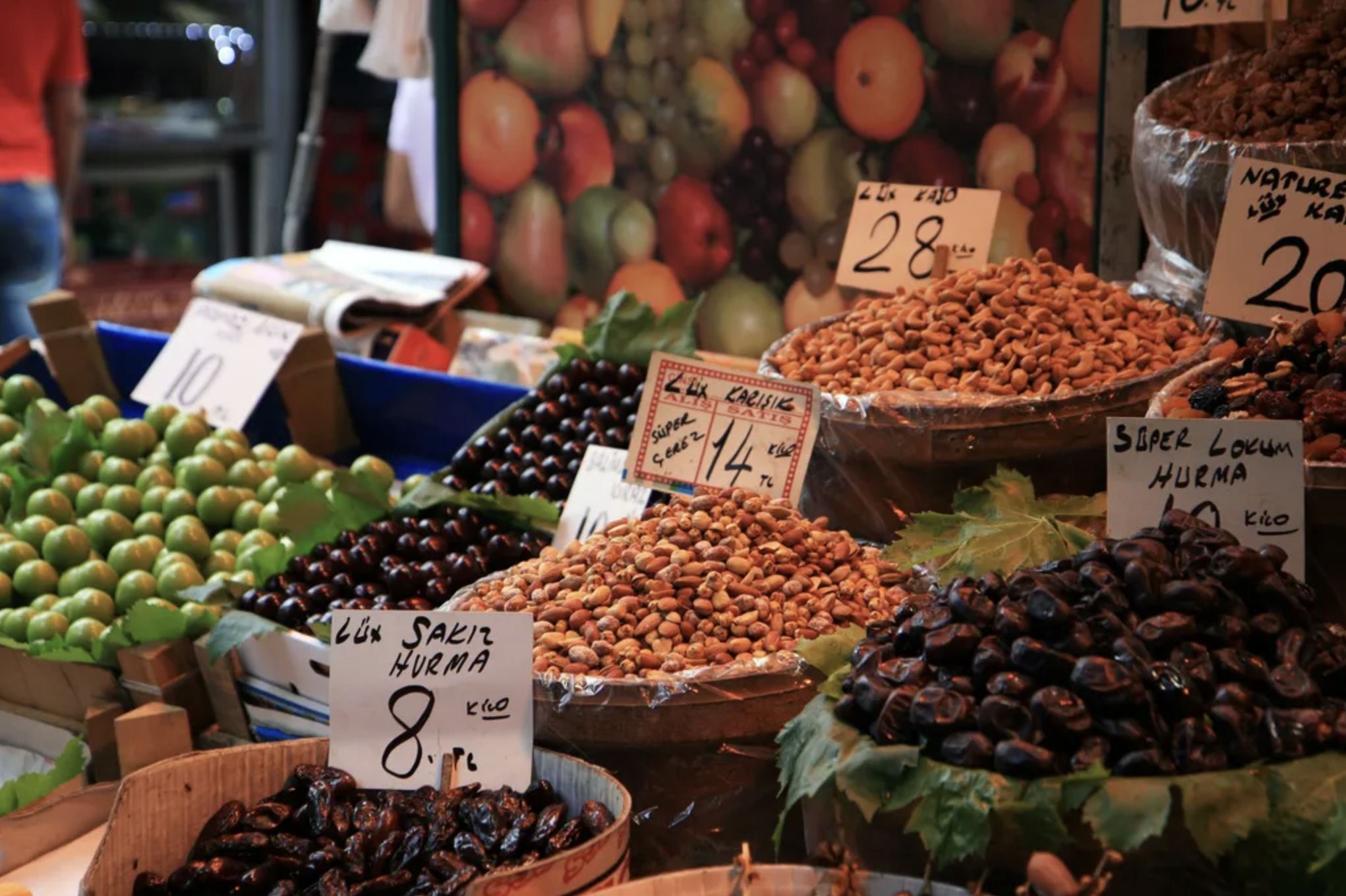
Spanning a maze of interconnected streets, Kadıköy Çarşı (market) is the lively heart of Istanbul’s Asian side—packed with vendors, restaurants and shops. A true feast for all the senses

Open since 1935 and still family-run, Özcan Turşu is a beloved spot for Turkish pickles and pickle juice—everything from beets to pears, with locals stopping in for a quick glass said to cure all kinds of digestive troubles

Ecevitler Şarküteri is the market's main delicatessen. Visit Ulaş Baharat for all bouties of nature from spices to honey, teas, oils, natural beauty products. For sakatat (offal), Pak Ciğerci with main product being liver that is common in Turkish kitchen

Çiya Sofrası is a laid-back food sanctuary of Anatolian recipes

Şekerci Cafer Erol was founded in 1803. Along with Turkish delight, you'll find many sweets here from akide (boiled sweets) and kestane şekeri (glazed chestnust) and a huge selection of Ottoman desserts as well: tulumba, şekerpare, aşure

Süreyya Operası was inspired by Paris' Champs-Elysees Theater and built in 1927 by the Ottoman Armenian architect Kegham Kavafyan by order of Süreyya Pasha

Due to the incomplete construction of the musical theater, operas were never performed and by 1930 the structure was converted into the Süreyya Cinema with Hikmet Nazım (father of the famed poet Nazım Hikmet) as its first manager

Redeveloped in 2007, this historic venue featuring a red velvet interior and frescoed ceiling, now hosts regular performances of ballet, classical music, and opera
Moda

Barış Manço fused psychedelic rock with Anatolian folk to shape a genre and spread a message of unity—singing across languages and borders to promote peace and cultural pride

Barış Manço’s house in Moda, now a museum, offers an intimate glimpse into the life of the beloved musician. Preserved as he left it, it showcases his outfits, instruments, and treasures—capturing the spirit of a man who bridged East and West

Outro is a gem for crate-diggers in Moda, with other local favorites in Kadıköy like Rainbow 45, Zoltan, and Zihni rounding out the neighborhood’s strong vinyl scene

Meşhur Dondurmacı Ali Usta has been a classic in the Moda neighborhood since 1969 with more than thirty flavors of homemade ice cream. Some of the popular flavors are blackberry, raspberry, banana, melon, cherry and black mulberry

Moda is also home to two beloved chocolate spots—Asuman, known for its signature dessert in the photo above, and nearby Moda Çikolatacısı, both serving up rich, decadent treats

Take a walk along the coast, then settle in at Moda Aile Çay Bahçesi for a glass of tea with a sea view. Perched above the Marmara, it’s a laid-back local favorite—perfect for watching the waves and ferries

Koço is a neighborhood meyhane (tavern) that's been around for more than fifty years. Enjoy rakı and meze outdoors with a view

On Kadife Street, the area's nightlife artery, some of the most popular venues include Arka Oda, Bina (low-rise apartment turned into a bar and lounge) as well as Karga
Day 4 - Thursday
Prince’s Islands
Once a place of exile for Byzantine royalty, the Princes’ Islands later became home to Istanbul’s Greek, Armenian, and Jewish minorities—who left their mark in churches, schools, and elegant wooden mansions
Princes’ Islands are now a beloved summer escape—think pebbly beaches, seaside rakı, and flower-lined lanes with no cars (though electric carts are getting common)
Pick an island to discover, hop on a ferry, rent a bike or wander on foot, and hike to the top for sweeping sea views. End your day with fresh fish, meze, and rakı at a seaside table
Burgazada offers a more local, laid-back alternative to touristy Büyükada, with Heybeliada and Kınalıada as less popular options
Büyükada

Just steps from the ferry pier, lively square is the heart of the island—and a historic meeting point for generations. The clock tower, built in 1923, has become one of Büyükada’s most iconic landmarks

Büyükada Pastanesi is a small patisserie located in the market since 1955. Locals favorites are Turkish delight cookies, palmiye, eggplant-filled börekitas, creamy pastries, mini ay çöreği, and mille-feuille cake

Wander around the streets of Büyükada and admire the houses

Splendid Palace Hotel is an icon on the island, built in 1908. It is one of the few still functioning hotels of the island's belle epoch.

Nested on a cliff on Büyükada, Eskibağ Tavern is a local favorite and the best place to watch the sunset. Enjoy dinner there. If you want to stay closer to the bustling pier area, try Milto restaurant

Hidden in the pines atop Büyükada, Prinkipo Greek Orthodox Orphanage is one of the world’s largest wooden buildings

Prinkipo Palas was built in 1898 as a luxury hotel and casino, designed by architect Alexandre Vallaury. But Sultan Abdülhamid II denied the casino a license, so it served as an orphanage for Greek children, operating until its closure in 1964
Burgazada

Go to Antigoni or many of the other fish restaurants that you'll see on the coast as soon as you get off the ferry

On a hillside in Burgazada, Aya İrini is a peaceful Greek Orthodox church dating back to the 19th century. Still in use today, it’s a quiet reminder of the island’s multicultural past—and a serene stop on your walk through Burgaz

Burgazada pier

Photo by Sırma Aksüyek on the streets of Burgaz island

Çilekli (strawberry) mille-feuille at Ergün pastanesi (patisserie) is a local's favorite

Admire the pretty houses around the island. Photo by Ümit Hamidi

Ümit Hamidi

Hike to the top of the island
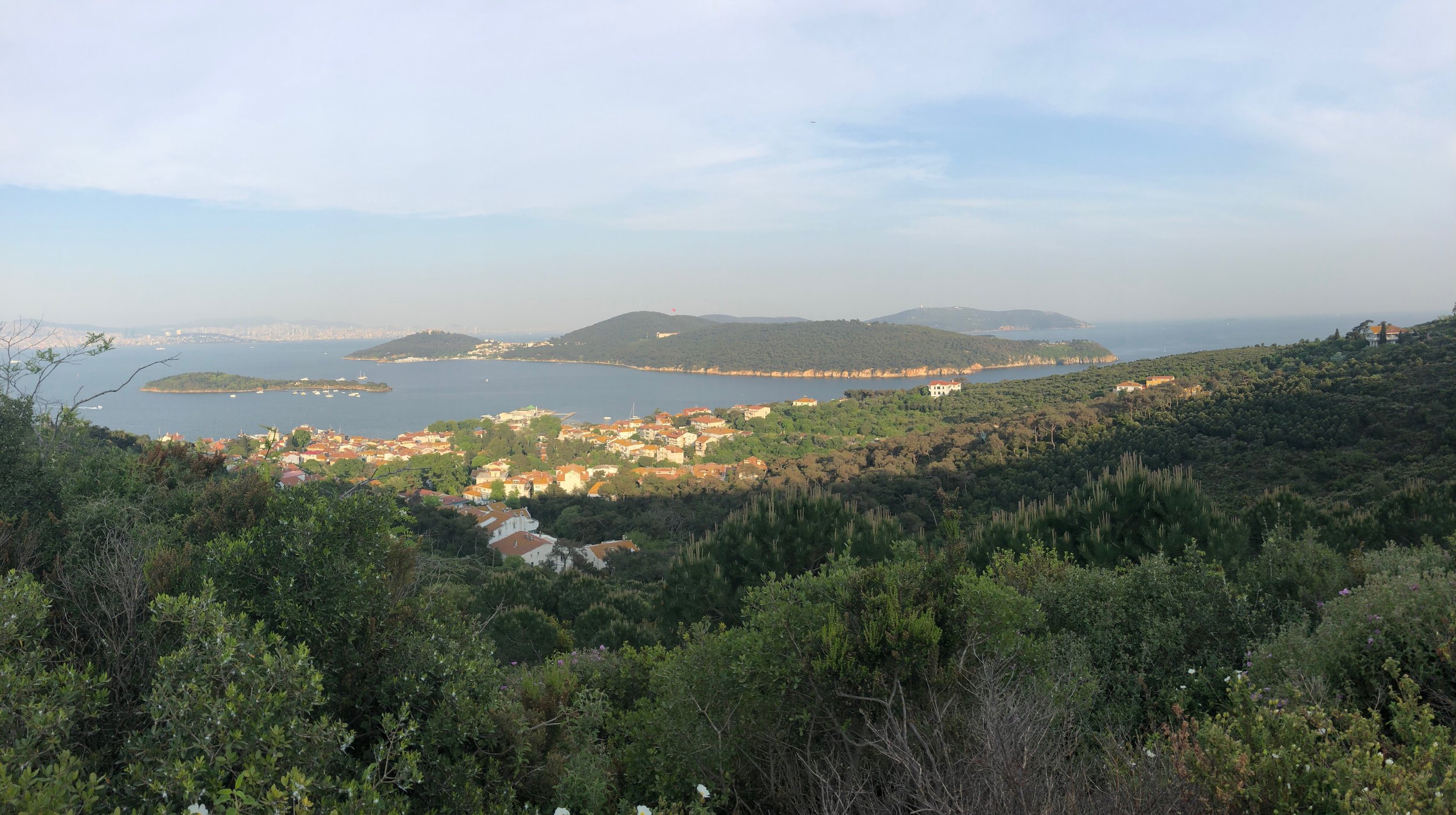
enjoy the views from there...

and the calm

Go to Kalpazankaya restaurant to enjoy the views and sunset with rakı, fish and meze

Make sure you make a reservation ahead of time, they are really popular this time of year!

Get an ice cream from a local's favorite Sinem Dondurma or the mini truck in front of the beach clubs


Day 5 - Friday
Beyoğlu
Galata, Karaköy, Cihangir, Taksim, Pera, Şişhane, Galatasaray, Çukurcuma
Once known as Pera, Beyoğlu has long been Istanbul’s cosmopolitan core—home to embassies, art nouveau buildings, and the city's first electric tram. Today, its storied past blends into vibrant nightlife, where historic arcades and grand avenues give way to buzzing bars, clubs, and meyhanes after dark
Galata, Karaköy

Built in 1348 by the Genoese, the Galata Tower once watched over ships entering the Golden Horn. Over the centuries, it served as a lookout, prison, and fire tower—always standing guard as the city transformed around it

Today, it offers one of Istanbul’s most breathtaking panoramic views. Photo: Ümit Hamidi

Serdar-ı Ekrem street is the heart of Galata charm—lined with color-soaked facades, restored apartment buildings, boutiques, vintage stores and ateliers

Dogan Apartment is one of the most-well known structures on Serdar-ı Ekrem street. Only if the main door is open you'll be able to catch a glimpse of the inner courtyard

Galata Mevlevihanesi is a dervish lodge of Mevlevi Sufism best known by the figure of 'whirling dervish'. It's a tradition started by Rumi's followers

Salt Galata is housed in the former Ottoman Bank built in 1892 by Alexandre Vallaury. It is home to exhibition spaces, the Ottoman Bank Museum and an extensive library and research center

On the top floor of SALT Galata, lives Neolokal, a Michelin-starred gem. Neolokal reinterprets Anatolian recipes with a modern touch

Expect bold flavors, local ingredients, and sweeping views of the Golden Horn

Kılıç Ali Paşa Hamamı is a 16th-century Ottoman bathhouse designed by Mimar Sinan. Meticulously restored, it offers a refined hamam experience under a grand dome—men and women bathe at separate hours, in keeping with tradition

Fish kebabs being grilled in Karaköy -- Øivind Haug

Karaköy Güllüoğlu is Istanbul’s most iconic baklava shop, run by the same family since the 1940s. Pair desserts with a glass of Turkish tea

Karaköy Lokantası serves flavor-packed dishes like tarama, fried zucchini with yogurt, and sea bass with mustard remoulade. With over 80 mezze and subtle Greek influences, it’s a local favorite that lives up to the hype

Galataport, once Istanbul’s historic port, now a sleek waterfront promenade lined with cafes, boutiques, and art spaces—perfect for a sunset stroll with views of the Old City across the Bosphorus

A Bodrum favorite Sait, also Michelin recommended, has a restaurant in Galataport serving seafood over the views of Bosphorus
Taksim, Istiklal, Pera

At the heart of modern Istanbul, Taksim Square has witnessed protests, parades, and everyday life. Behind it rises the sleek new Atatürk Kültür Merkezi, a bold tribute to the city’s cultural pulse

First opened in 1969 and fully rebuilt in 2021, the Atatürk Cultural Center hosts opera, ballet, jazz and cinema

Stretching from Taksim to Galata, İstiklal is Istanbul’s busiest pedestrian street—packed with bookstores, embassies, churches, bars, music shops, and late-night snacks

St. Antuan is the largest Catholic church in Istanbul. Built by Italian architects in the early 1900s, its neo-Gothic facade and red-brick cloisters offer a rare moment of stillness amid the noise. Step through its gates and light a candle!

Çiçek Pasajı, built in 1876, is one of Beyoğlu’s most charming spots. The meyhanes may be touristy, but a beer and fries under the stained glass and ironwork is still worth it—for the atmosphere alone

Built in 1910 for an Egyptian prince, this elegant Art Nouveau building once housed poet Mehmet Akif Ersoy, author of Turkey’s national anthem

Over the decades, Mısır Apartmanı became a cultural hub, and today it hosts some of Istanbul’s most respected art galleries, like Galeri Nev and Zilberman Gallery

Pera Palace was built in 1892 for guests travelling east on the Orient Express. Another work by architecht Alexandre Vallaury, this hotel had many famous guests like Hemingway, Agatha Christie..

Pera Museum, besides its excellent permanent collection, always hosts interesting exhibitions

Asmalı Cavit is an intimate meyhane (Turkish tavern) and a cherished institution among its many loyal patrons
Night scene

Monkey Bar is a good spot to start the night with a cocktail

Gizli Bahçe

Bar hop in Cihangir. Geyik is the most popular bar, others around are Journey, Cafe Symrna

NOH Radio

Right next to NOH Radio is Tavern - you'll see many people out on the streets here

Mini Muzikhol, the oldest underground club in Istanbul at the heart of Cihangir for 17 years. It gets more vibrant late night

Sumahan, another underground late night venue

Grab a ıslak hamburger (wet burger) from Kızılkayalar if you had a late night before going home. Or any time of the day, they are delicious and Kızılkayalar has many branches all over Istanbul
Day 6 - Saturday
Beşiktaş, Nişantaşı, Topağacı
Nişantaşı is an area known for its wealth, not just in terms of its residents, but also in fashion, design and gastronomy. It is one of the more liberal and progressive areas of Istanbul, and the fashion capital of Istanbul
Dolmabahçe Palace isn’t in Nişantaşı but can be visited before you head up there!
Beşiktaş, Nişantaşı

Dolmabahçe Palace is an opulent waterfront residence where Ottoman sultans once ruled and where Atatürk spent his final days and passed away in 1938

Everybody loves a Turkish pizza: lahmacun. For the best lahmacun, go to Michelin recommended Tatbak or Mahir Lokantasi

Turkey ranks fifth in the world in terms of the size of vineyards. Go to Foxy on Mim Kemal Öke avenue to try local wines paired with Michelin starred chef's mezzes

Hünkar, founded in 1950 in Fatih and moved to Nişantaşı in 2000, is a must-visit Istanbul restaurant. Try hünkar beğendi, sarma and kazandibi or kabak tatlısı for dessert
Discover Turkish design talents

Begüm Khan, a gem on Mim Kemal Öke, is known for bold, whimsical jewelry that blends Ottoman motifs with modern luxury

Muse for All is another cool Turkish brand on Mim Kemal Öke

Another essential stop FEY, by Turkey's first fashion editor

Kismet by Milka is a fine-jewelry brand that is also available in many international locations

Visit Lug Von Siga's showroom at Narmanlı Apartment, if you like colorful floral patterns and embroidery

Manu Atelier for handcrafted leather handbags

Vakko is one of Turkey's most important luxury fashion houses. Checkout V2K designers carrying contemporary collections

Gizia is a concept store that brings together collections of Turkey's most successful designers under one roof

Mybestfriends, right next to Gizia, is another young brand on Abdi Ipekçi Avenue

Beymen is one of Turkey's most important department stores. Check out the accessories floor to discover unique local designs

Yastik by Rifat Ozbek designs cushions with floral Anatolian patterns, English striped motifs, Ottoman silks and African wax prints. Check out the store and order online later

Homemade Aromaterapi is a 'healing & wellbeing' store with its own line of facial treatments, body care, essential oils and hair care products
Night scene

Spago by Wolfgang Puck is located on the roof of St. Regis hotel, with views of Maçka Park, cable cars and Bosphorus off to the left. Enjoy a cocktail here with sunset

Socrates is a stylish hangout where bold dishes meet a serious bar. Think currywurst, sous-vide burgers, and cocktails served with a side of sports culture

Federal is an Australian coffee roaster with tables out on the cobblestones where the neighborhood locals meet for a coffee or cocktail

Kozmonot is a space-travel themed pub (as its name suggests) that offers plenty of cocktails as well as beer on tap

Love dance point is a gay bar open only Friday and Saturdays. If the sign is on, go in for Turkish and international playlist mixes. Every now and then, expect go-go boys or drag queens to dance on the counter
Where else to visit?
Aegean & Mediterrenean Coast
Turquoise coves, ancient ruins, and charming coastal towns await—whether you're swimming, exploring archaeological sites, or chartering a boat. The places below are a mix of Turkish gems and nearby Greek islands, all rich in history and beauty

Çeşme & Alaçatı blend bohemian charm with Aegean elegance—cobblestone streets, turquoise coves, and some of the world’s best windsurfing spots meet laid-back beach clubs and stone houses

Chios is a Greek island just a 20–30 minute ferry ride from Çeşme, making it an easy cross-border escape. Expect quiet beaches, medieval villages, and the unique scent of mastic trees drifting through the air

Ephesus was once a thriving Roman city and major port—now it stands as one of the world’s best-preserved ancient ruins, home to the grand Library of Celsus and a 25,000-seat theatre

Samos is a Greek island just across the Aegean from Kuşadası, near Ephesus. Known for its green hills, beaches, and history, it's easily reached by a short ferry ride

Bodrum has long been the summer escape for Istanbulites—but in recent years, it’s gained global fame. Whitewashed houses draped in bougainvillea, lively beach clubs, and great food & night scene

Kos is easily reached from Bodrum by a short 20–30 minute ferry ride, offering a quick hop into Greece. The island blends ancient ruins with sandy beaches and a laid-back Mediterranean vibe

Kalymnos, Leros, and Patmos are nearby Greek islands you can reach by ferry from Kos—each offering a mix of quiet charm, sea views, and history

Datça is a quieter alternative to Turkey’s busier beach towns—where pine-covered hills meet crystal-clear coves, and slow summer days unfold in timeless stone villages

Marmaris sits where the Aegean meets the Mediterranean, with a lively marina, a hilltop castle, and boat trips to hidden coves. For a scenic dinner, head to Manzara Restaurant for panoramic views over the bay

Rhodes and Symi are two Greek islands just a short ferry ride from Marmaris. Rhodes offers medieval architecture and ancient ruins, while Symi charms with its pastel-colored harbor and slow island pace—both perfect for a day trip

Bozburun is a tranquil village, known for its traditional gulet boatyards, and relaxed pace. The Bozburun Yacht Club adds a touch of understated luxury to this quiet corner of the coast

Göcek is known for its calm bays, elegant marinas, and waterfront dining. Secluded and scenic, it's where Cale proposed to Neşe

Hillside Beach Club in Fethiye is a favorite resort among Turks, loved for its clear waters, excellent food, and wide range of activities. It’s also where Cale and Neşe first met

Kaş is a laid-back Mediterranean town known for its clear waters, ancient ruins, and bougainvillea-lined streets. It’s a favorite for diving and boat trips to the sunken city of Kekova

Kastellorizo is a tiny Greek island just 2 km off the coast of Kaş, Turkey, reachable by a 30-minute ferry ride. It's known for its pastel-colored neoclassical houses
Cappadocia & Black Sea
If you’re skipping the beach, Cappadocia’s surreal landscape and the Black Sea region’s lush, misty mountains offer two great summer alternatives

Cappadocia is an unreal landscape of fairy chimneys, ancient cave dwellings, and underground cities—best seen at sunrise as hot air balloons drift silently above the valleys

Karaca Cave—an otherworldly underground site near Gümüşhane, filled with surreal dripstone formations, shimmering stalactites, and mirror-like pools in shades of gold and amber

Sümela Monastery, carved into the cliffs of Trabzon, is a stunning example of Byzantine architecture and Orthodox Christian heritage—set high above the forest with breathtaking views of the valley below

Pokut and Ayder Yaylas, in the mountains of Rize, are among the Black Sea’s most beloved highlands—known for their fog-draped valleys, wooden homes, and cool summer air

Cross the historic Şenyuva bridge while in Rize and visit the fairy-tale-like Zil Castle

Visit tea gardens in Rize or Trabzon, collect tea leaves
Watch
Read
The guide is mostly based on a book by Seda Domaniç and Sinan Sökmen
‘Monday to Sunday Istanbul’
Fiction
A Useless Man: Selected Stories, Sait Faik Abasıyanık (2014)
Madonna in a Fur Coat, Sabahattin Ali (1943)
Poetry
Poems of Nazım Hikmet, Revised and Expanded Edition (2002)
Rumi, The Book of Love: Poems of Ecstasy and Longing (2003)
Orhan Veli, Selected Poems (1951)